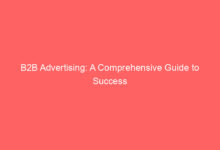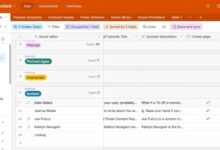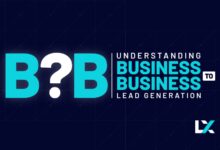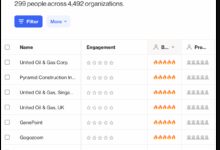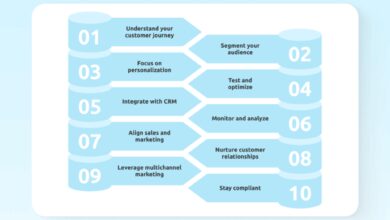B2B Marketing Strategy: 7 Proven Power Tactics to Dominate 2024
Ever feel like your B2B marketing is shouting into the void? You’re not alone. But the right b2b marketing strategy can turn whispers into sales storms.
Understanding the Core of B2B Marketing Strategy

A successful b2b marketing strategy isn’t just about ads or brochures—it’s a comprehensive plan to attract, engage, and convert other businesses into loyal customers. Unlike B2C, B2B decisions involve longer sales cycles, multiple stakeholders, and logic-driven choices. That’s why a well-structured strategy is non-negotiable.
What Sets B2B Apart from B2C?
The fundamental difference lies in audience behavior. B2B buyers are professionals making calculated decisions, often backed by data and team consensus. Emotional impulses are less influential than ROI, efficiency, and long-term value.
- B2B sales cycles are longer and more complex.
- Purchase decisions involve multiple decision-makers (DMUs).
- Relationships and trust are paramount.
According to Forrester Research, 68% of B2B buyers expect vendors to understand their business needs before even starting a conversation. This underscores the need for deep research and personalization in any b2b marketing strategy.
Key Components of a Winning B2B Marketing Strategy
A robust b2b marketing strategy integrates several core elements: target audience definition, value proposition, channel selection, content planning, and performance measurement. Each component must align with the others to create synergy.
- Clear buyer personas and ICPs (Ideal Customer Profiles).
- A compelling unique value proposition (UVP).
- Multi-channel engagement (digital, events, sales alignment).
“Marketing is no longer about the stuff you make, but the stories you tell.” – Seth Godin
Defining Your Ideal Customer Profile (ICP)
One of the most critical steps in crafting an effective b2b marketing strategy is identifying who you’re selling to. An Ideal Customer Profile (ICP) is a detailed description of the company that gains the most value from your product and provides the highest lifetime value to you.
Demographic and Firmographic Criteria
Start with firmographics—essentially the demographics of a business. These include industry, company size (revenue, employees), location, and technology stack. For example, a SaaS company targeting mid-sized tech firms in North America would filter prospects based on these attributes.
- Industry: Are they in healthcare, fintech, or manufacturing?
- Company size: Do they have 50–500 employees?
- Revenue range: Is their annual revenue between $10M–$100M?
Tools like LinkedIn Sales Navigator can help refine your ICP using real-time firmographic data.
Technographic and Behavioral Insights
Technographics reveal the software and tools a company already uses. If your product integrates with Salesforce, you’ll want to target companies already using CRM platforms. Behavioral data includes engagement patterns—do they attend webinars, download whitepapers, or engage on social media?
- Current tech stack: Do they use competing or complementary tools?
- Digital behavior: What content do they consume?
- Pain points: What challenges do they frequently mention online?
Platforms like 6sense and Gartner offer deep technographic and intent data to refine targeting.
Mapping the B2B Buyer’s Journey
Understanding how your prospects move from awareness to decision is essential for timing and messaging in your b2b marketing strategy. The B2B buyer’s journey typically consists of three stages: Awareness, Consideration, and Decision.
Awareness Stage: Educate, Don’t Sell
In this phase, prospects realize they have a problem but may not know how to solve it. Your role is to provide educational content that highlights the issue and its impact.
- Blog posts explaining industry challenges.
- Infographics on market trends.
- Social media content that sparks discussion.
For example, a cybersecurity firm might publish a blog titled “5 Hidden Risks in Remote Work Security” to attract IT managers concerned about data breaches.
Consideration Stage: Position Your Solution
Now the buyer knows their problem and is researching solutions. This is where your b2b marketing strategy should showcase your expertise and differentiate your offering.
- E-books and whitepapers with in-depth analysis.
- Webinars featuring case studies.
- Comparison guides (e.g., “Cloud vs. On-Premise Security: Pros and Cons”).
Content at this stage should be gated to capture leads, allowing your sales team to follow up with qualified prospects.
Decision Stage: Close with Confidence
The buyer has shortlisted options and is ready to choose. Your marketing must now provide proof and reassurance.
- Detailed case studies with measurable results.
- Free trials or product demos.
- Customer testimonials and ROI calculators.
A well-crafted demo video or a personalized proposal can be the final push needed to win the deal.
Leveraging Content Marketing in B2B Strategy
Content is the backbone of any modern b2b marketing strategy. It builds trust, establishes authority, and nurtures leads through the funnel. But not all content is created equal—quality and relevance are key.
Types of High-Impact B2B Content
Different content formats serve different purposes across the buyer’s journey. A diversified content mix ensures you’re meeting prospects where they are.
- Whitepapers: Deep-dive reports that position your brand as a thought leader.
- Case studies: Real-world proof of your solution’s effectiveness.
- Video content: Explainer videos, customer interviews, and product walkthroughs.
According to the Content Marketing Institute, 91% of B2B marketers use content marketing to reach customers, but only 42% have a documented strategy. That’s a huge opportunity gap.
Content Distribution Channels
Creating great content isn’t enough—you need to get it in front of the right eyes. Strategic distribution amplifies your reach and drives engagement.
- Email newsletters to nurture leads.
- LinkedIn and Twitter for professional audiences.
- SEO-optimized blogs to attract organic traffic.
Repurposing content across platforms (e.g., turning a webinar into a blog series and social snippets) maximizes ROI and keeps your message consistent.
Account-Based Marketing (ABM) as a Strategic Pillar
Account-Based Marketing (ABM) is one of the most powerful evolutions in b2b marketing strategy. Instead of casting a wide net, ABM focuses on targeting high-value accounts with personalized campaigns.
What Is ABM and Why It Works
ABM treats individual accounts as markets of one. Marketing and sales teams collaborate to create hyper-targeted campaigns for specific companies, increasing relevance and conversion rates.
- Higher ROI: ABM campaigns deliver 208% higher ROI than traditional demand gen, per ABM Institute.
- Better alignment: Sales and marketing work from the same playbook.
- Stronger relationships: Personalization builds trust faster.
For example, a cloud infrastructure provider might create a custom microsite for a Fortune 500 client, showcasing tailored use cases and integration benefits.
Steps to Launch an ABM Campaign
Implementing ABM requires precision and coordination. Here’s a step-by-step approach:
- Identify target accounts using ICP and intent data.
- Develop personalized messaging and content for each account.
- Engage via multiple channels: email, ads, direct mail, and events.
- Measure engagement and sales outcomes jointly with the sales team.
Tools like Terminus and Demandbase specialize in ABM orchestration, enabling scalable personalization.
Integrating Digital Channels into Your B2B Marketing Strategy
In today’s digital-first world, a strong online presence is essential. Your b2b marketing strategy must leverage multiple digital channels to reach decision-makers where they spend their time.
Search Engine Optimization (SEO) for B2B
SEO ensures your content is discoverable when prospects are searching for solutions. B2B SEO focuses on long-tail, intent-rich keywords like “best CRM for enterprise sales teams.”
- Optimize landing pages with clear CTAs.
- Create pillar content around core topics (e.g., “The Complete Guide to B2B Lead Generation”).
- Build backlinks from industry publications and partners.
According to Ahrefs, organic search drives 53% of all website traffic, making SEO a cornerstone of any b2b marketing strategy.
Paid Advertising: Precision Targeting
PPC and social ads allow you to reach specific audiences quickly. LinkedIn Ads, in particular, are highly effective for B2B due to their professional targeting options.
- Use job title, industry, and company size filters.
- Run retargeting campaigns for website visitors.
- Test ad copy focused on pain points and ROI.
A/B testing ad creatives can improve CTR by up to 40%, according to WordStream.
Social Media and Thought Leadership
Social platforms aren’t just for B2C. LinkedIn, Twitter, and even YouTube are powerful tools for building credibility and engaging with prospects.
- Share insights, industry news, and original research.
- Host live Q&A sessions or LinkedIn audio events.
- Encourage executives to publish personal thought leadership content.
CEOs and founders who actively engage on social media can increase brand trust by 72%, per Edelman Trust Barometer.
Measuring Success: KPIs and Analytics in B2B Marketing
Without measurement, your b2b marketing strategy is flying blind. Tracking the right KPIs helps you optimize campaigns, justify budgets, and prove ROI.
Essential B2B Marketing KPIs
Not all metrics are created equal. Focus on those that reflect real business impact.
- Customer Acquisition Cost (CAC): How much it costs to win a new customer.
- Marketing Qualified Leads (MQLs): Leads deemed ready for sales follow-up.
- Conversion rates by stage: From visitor to lead, lead to customer.
Tools like HubSpot and Marketo provide dashboards to track these metrics in real time.
Attribution Models and Revenue Impact
Understanding which channels drive conversions is crucial. Multi-touch attribution models give credit to all touchpoints in the buyer’s journey, not just the last click.
- First-touch: Credits the initial interaction.
- Last-touch: Credits the final action before conversion.
- Linear: Distributes credit evenly across all touchpoints.
According to McKinsey, companies using advanced attribution see a 10–20% increase in marketing efficiency.
Aligning Sales and Marketing Teams
One of the biggest barriers to b2b marketing strategy success is misalignment between sales and marketing. When these teams work in silos, leads go cold, messaging gets inconsistent, and revenue suffers.
Creating a Service Level Agreement (SLA)
A formal SLA between sales and marketing defines expectations, such as how many MQLs marketing will deliver and how quickly sales will follow up.
- Define lead scoring criteria together.
- Set response time benchmarks (e.g., within 1 hour).
- Hold joint review meetings monthly.
Companies with aligned teams achieve 36% higher customer retention and 38% higher sales win rates (Salesforce).
Shared Technology and Data
Using shared platforms like CRM systems ensures both teams have access to the same data. This transparency improves lead handoff and personalization.
- Integrate marketing automation with CRM (e.g., HubSpot + Salesforce).
- Track lead status and engagement history.
- Use shared dashboards for performance visibility.
When sales can see a lead’s content downloads and email opens, they can personalize their outreach more effectively.
What is the most important element of a b2b marketing strategy?
The most important element is a clearly defined Ideal Customer Profile (ICP). Without knowing exactly who you’re targeting, even the best content and ads will miss the mark. A precise ICP ensures your messaging, channels, and offers resonate with the right decision-makers.
How long does a typical B2B marketing strategy take to show results?
Most B2B strategies take 6–12 months to show significant results due to longer sales cycles. However, early wins can be seen in increased website traffic, lead volume, and engagement within 3–6 months with consistent execution.
Is account-based marketing worth it for small B2B companies?
Yes, especially if you have a high-value product or service. Even small teams can run lean ABM campaigns targeting 10–20 key accounts with personalized emails, LinkedIn outreach, and tailored content, often yielding high conversion rates.
How do I measure the ROI of my b2b marketing strategy?
Calculate ROI by subtracting marketing costs from revenue generated, then dividing by marketing costs. Use CRM and marketing automation tools to track which campaigns drive closed deals. Focus on CAC, LTV, and pipeline velocity for a complete picture.
Can email marketing still work in a modern b2b marketing strategy?
Absolutely. Email remains one of the highest ROI channels in B2B. Personalized, segmented email campaigns—especially nurture sequences—can drive engagement, educate prospects, and move leads down the funnel effectively.
A winning b2b marketing strategy blends data, creativity, and alignment. From defining your ICP to leveraging ABM and measuring KPIs, every element must work in concert. The digital landscape is crowded, but businesses that focus on relevance, value, and relationships will always stand out. Start with one tactic, refine it, then scale. The future of B2B growth belongs to those who strategize with purpose.
Further Reading:
